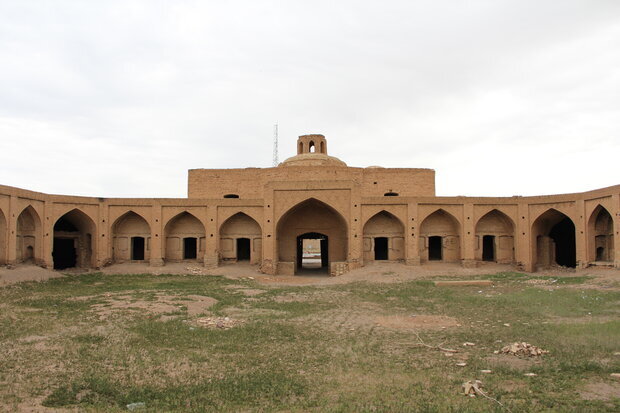Bagh Sheikh Caravanserai, a candidate for UNESCO status, undergoes restoration

TEHRAN – The centuries-old Bagh Sheikh Caravanserai, which is a candidate for UNESCO status, has undergone restoration.
Also called Abdol Ghaffar Khan Caravanserai, the monument dates back to Qajar-era (1794–1925) epoch and is located in the city of Saveh, central Iran.
“Pillars, columns, cracks, brick arch ceilings, the façade, and worn-out bricks of the caravanserai are subject to the restoration project,” Saveh tourism chief Reza Ayyaz announced on Sunday.
“The monument is one of (Iran’s) candidates for the [possible] UNESCO registration, which its preliminary work is carried out,” the official said.
Bagh Sheikh is one of Iran’s magnificent comprehensive caravanserais in terms of plan form, decorations, proportions as well as the patterns and arrangements of its functional spaces, he explained.
The roadside inn is one of the Iranian caravanserais prepared for a possible inscription on the UNESCO World Heritage list. In 2019, the tourism ministry announced that Iran is developing a dossier for a selection of its historical caravansaries for a possible inscription on the UNESCO World Heritage list.
In this regard, cultural heritage experts are assessing such monuments that are scattered across the country to make a shortlist in terms of their architecture, historical and cultural values.
Caravanserai is a compound word combining “caravan” with “serai”. The first stands for a group of travelers and seari (or sara) stands for building. They often had massive portals supported by elevated load-bearing walls. Guest rooms were constructed around the courtyard and stables behind them with doors in the corners of the yard.
Iran’s earliest caravanserais were built during the Achaemenid era (550 -330 BC). Centuries later, when Shah Abbas I assumed power from 1588 – to 1629, he ordered the construction of network caravanserais across the country.
Such roadside inns were originally built in various epochs along ancient caravan routes in the Muslim world to shelter people, their goods, and animals. The former Silk Roads may be the most famous example dotted by caravanserais.
For many travelers to Iran, staying in or even visiting a centuries-old caravanserai, can be a wide experience; they have an opportunity to feel the past, a time travel back into a forgotten age!
AFM
